How we’re changing the STEM equation for girls
October 18, 2023 | By Susan Warner
In 2015 I met Eva M. when the 11-year-old attended our first Girls4Tech program expansion to Gurugram, India.
Three years ago, she interned with us in our Toronto office, and today she’s a programmer analyst with Scotiabank. She credits her love of cybersecurity and computer programming to the hands-on, real-world activities she enjoyed with Girls4Tech.

“I had the best time in that workshop,” Eva recently told me. “There was so much to learn. What made Girls4Tech different than any other workshop is that we did activities — although on a smaller scale — that would actually happen at Mastercard.”
Nearly 10 years ago, we created Girls4Tech, our signature STEM education program, to showcase Mastercard’s technology and to help girls see that it takes all kinds of skills — including ones they already possess, like curiosity and initiative — to pursue a STEM career.
At the time, the number of girls pursuing STEM careers was at an all-time low — not just in the U.S. but around the globe. In 2017, one in five boys said they would pursue STEM, while only one in 20 girls were interested in seeking those same degrees, according to the World Economic Forum.
Our goal was to create a program that would focus on girls and engage our employees as role models and mentors, highlighting their payments technology backgrounds. We believed this corporate-community partnership could help level the playing field and reduce the inequities between boys and girls pursuing STEM careers. Because we know this: When there are multiple voices with myriad experiences at the table, we will create better technology and better products and services for our customers.
Since the early 2000s, I’m pleased to say there has been tremendous advocacy for girls in STEM, not just by us but by governments, major corporations and many nonprofits. You’d think with all this focus that the numbers would have changed dramatically. But according to Deloitte Global, the number of women in large technology companies has increased only 2.6% since 2019, and women represent just 33% of the population in tech roles. In the U.S., women make up only 28% of the STEM workforce, according to the American Association of University Women, and gender gaps are particularly high in some of the fastest-growing and highest-paid jobs of the future.
So what does that tell us? There is more to be done. Capturing girls’ interest in STEM at age 8 or 10 is one thing; keeping that interest is another. STEM role models and mentoring programs are integral to fostering that interest. That’s why we will debut a new Girls4Tech mentoring and scholarship program in 2024.
Constant learning is also key. Parents, teachers and girls should check out upskilling programs like the ones Microsoft, Google and IBM have created. Stay on top of the trends — did you know women make up only 25% of the cybersecurity workforce, a field that already suffers from an enormous shortage of professionals? That’s a STEM field just waiting for women to apply. And finally, when women join the STEM workforce, we need to retain them, so companies need to take a hard look at who is leaving these roles and why.
As we roll up our sleeves to get ready for the next 10 years, let’s take a moment to celebrate Girls4Tech’s success. To date, we’ve reached 5.7 million girls — two years earlier than the goal we announced in 2020, and according to research conducted by Euromonitor we are now the world’s largest STEM program designed for young girls.
We’ve translated our program into 23 languages, and more than 7,000 employees have volunteered at in-person and digital events in 63 countries. Last week, for International Day of the Girl, we hosted a “follow the sun” event in which we welcomed girls at 15 events in eight countries.
Since the launch of our original Girls4Tech program in 2014, we’ve expanded the curriculum to include Girls4Tech Cyber and AI, Girls4Tech 2.0, Girls4Tech & Sports and Girls4Tech & Code, a 20-week coding and mentoring program. In August we launched our first Girls4Tech Python Bootcamp for underrepresented college women in tech. And while Girls4Tech was not designed to be a pipeline program at Mastercard, we are very pleased to announce the first full-time hiring of a G4T participant, Zainab Ibrahim, an associate product specialist in Cyber & Intelligence Solutions.
To extend our curriculum reach over the years, Girls4Tech has partnered with education organizations including Scholastic, We Are Teachers, American Indian Foundation and Teach for Ukraine. In 2020 we announced a partnership with Discovery Education to expand Girls4Tech by bringing cyber and AI careers to life for students in the U.S. and Canada. And we’re expanding our partnership and our work to include data science, AI and blockchain for 2024. As we look to support girls all over the world, Girls4Tech.com also offers free STEM activities and resources in 10 languages for teachers and parents to encourage those interested in fun STEM activities.
Yes, there’s more work to be done to create an equitable workforce in technology. But it’s women like Eva and Zainab (and Beatrice, Nahfila, Zoya, Rina … I could go on) who keep us focused. Because we also know this: Every act matters, and together we can make a difference — and change the equation.
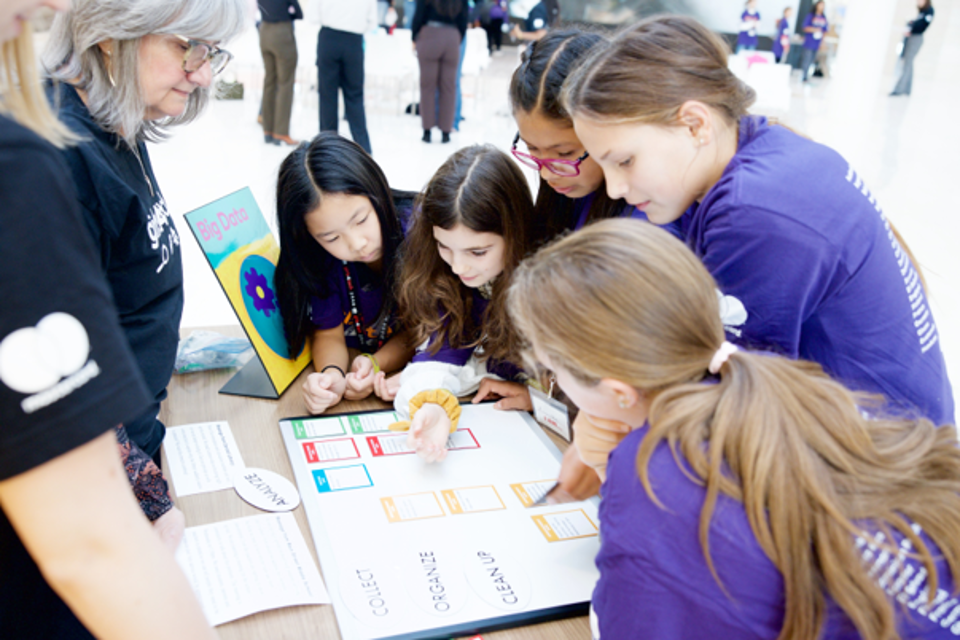
To celebrate International Day of the Girl October 11, Girls4Tech volunteers in 12 locations across seven countries hosted hundreds of girls. Here, longtime volunteer Susan Gaudio coaches girls at the company's Purchase, N.Y., headquarters as they work through an exercise on big data.
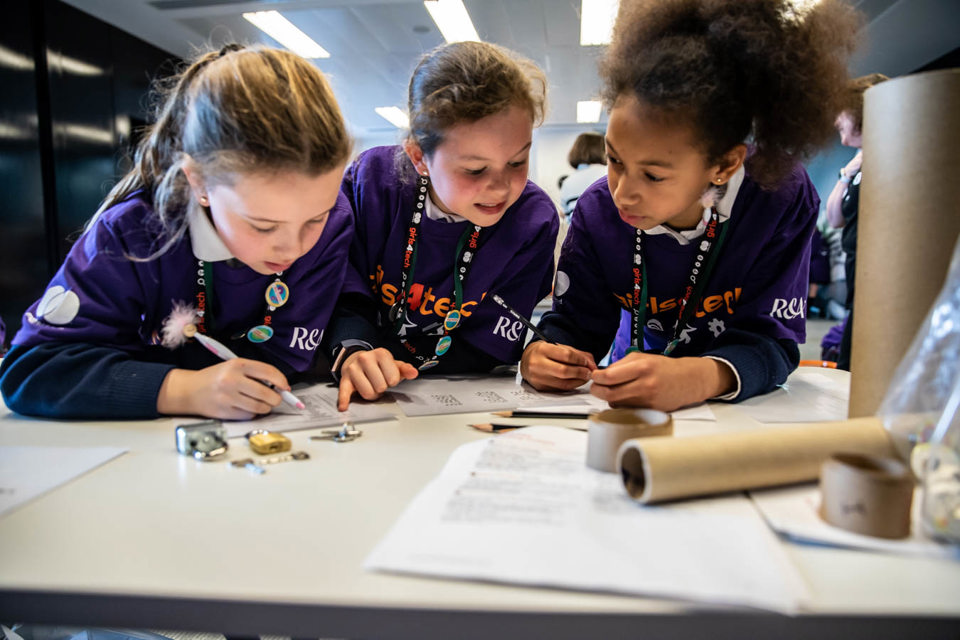
Girls4Tech has reached 5.7 million girls across the world. Here, girls in Dublin approach a challenge under the guidance of Mastercard employee mentors.
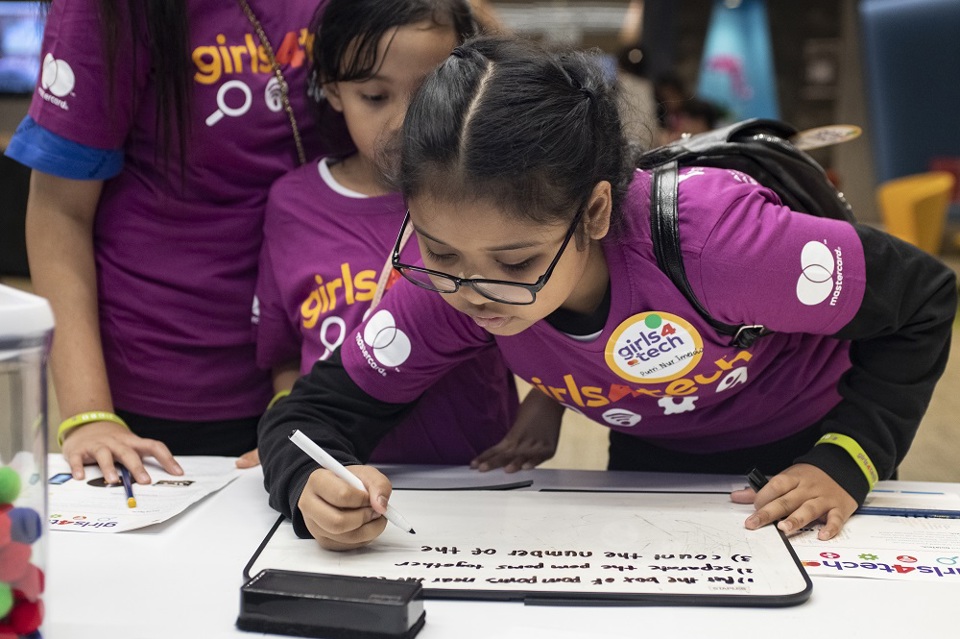
The Girls4Tech program — in action here in Singapore — is based on global science and math standards and incorporates Mastercard's expertise in technology and innovation, encouraging exploration of a range of STEM careers, such as fraud detection, data science and software engineering.
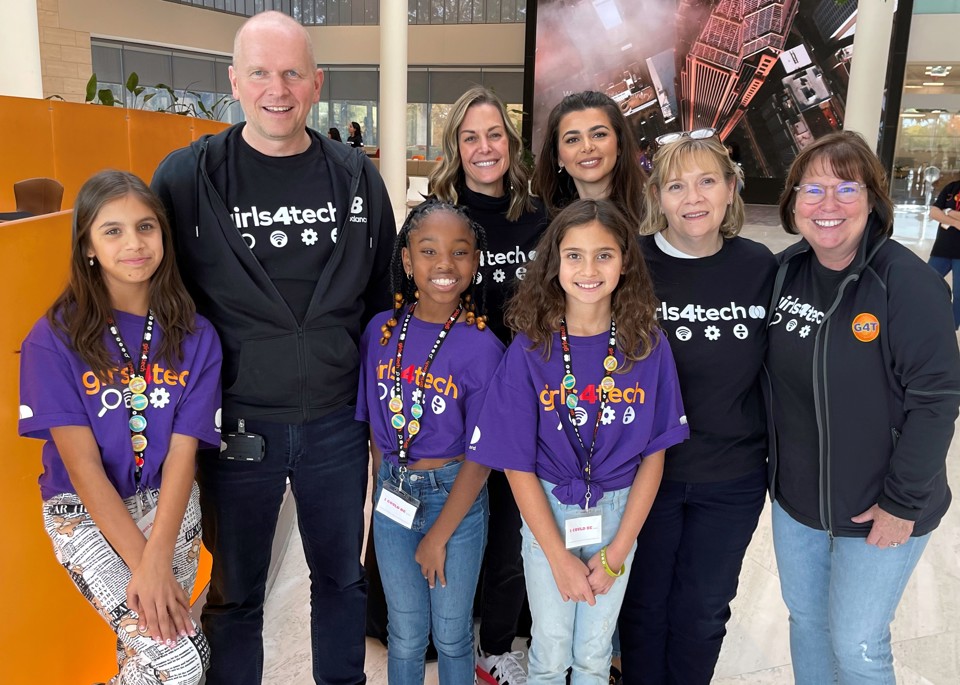
Girls4Tech founder Susan Warner, right, and Mastercard CEO Michael Miebach, second from left, at an event in Purchase.
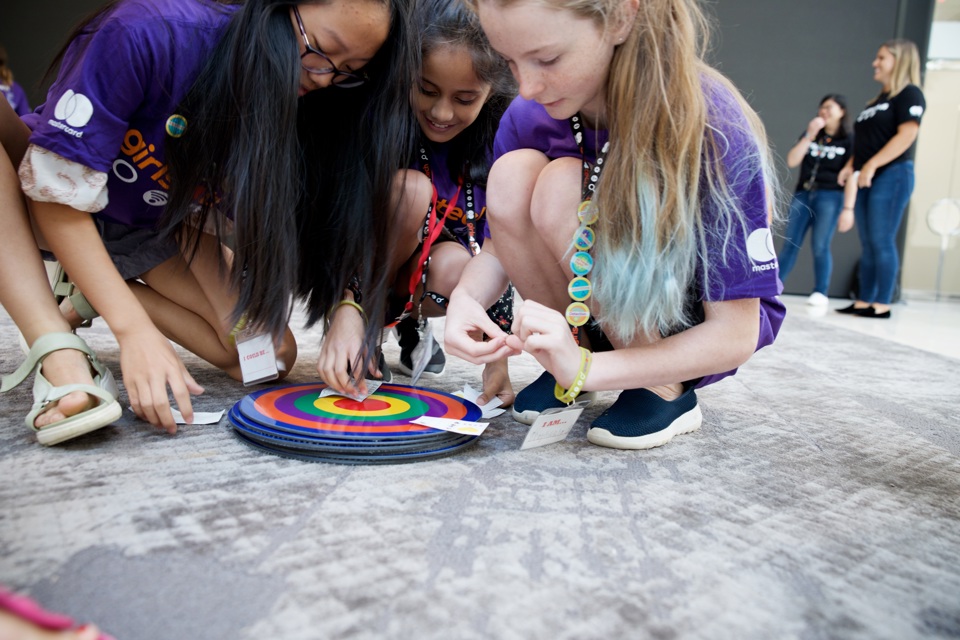
The program has added curriculum to give students deeper exposure to the growing fields of cybersecurity and AI, and has expanded to new age cohorts.